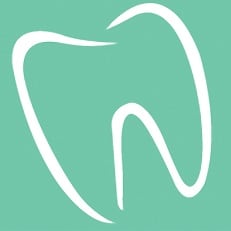
Dental Crowns and Bridges
Dental crowns and bridges are used to repair broken, missing or decayed teeth.
Dental Crowns
A crown is a tooth shaped covering made of ceramic, porcelain or precious metal that is permanently cemented on top of a tooth. It is usually used on teeth that have a very large filling and at risk of fracture. They are also often used on broken or discoloured teeth, as well as those that have had root canal treatments.
Dental Bridges
Bridges are used to replace one or more missing teeth. They are made with porcelain, ceramic or precious metals and are fixed to the teeth either side of the gap. This requires shaping of the neighbouring teeth to allow the bridge to be permanently attached.
5 Year Warranty
All crowns and bridges are covered by a 5 year warranty. If your crown or bridge breaks, we will replace it free of charge*.
*Providing you’ve had regular maintenance appointments to check for any defects.
Do I need a bridge or a crown?
If you have missing teeth and don’t want to have a dental implant, a bridge is the answer as it will ‘replace’ or ‘bridge the gap’ of the missing tooth.
A crown may be suggested by your dentist to help install a bridge, cover a fractured tooth or root canal treated tooth, replace a large filling, protect a weak tooth from breaking or to cover a discoloured or irregular shaped tooth.
Types of dental crowns
The main kinds of crowns used in dentistry:
- Ceramic – these crowns are made with porcelain which can be matched exactly with your original tooth colour and are highly aesthetic
- Porcelain fused to metal – these crowns have underlying metal with porcelain veneered over the top
- Gold alloys – a mixture of gold, copper and other metals make this crown strong, durable and fracture resistant
Types of dental bridges
There are three main types of bridges used in dentistry:
- Traditional bridges – a crown is attached to the teeth either side of a missing tooth/gap, with a pontic or replacement tooth in the middle.
- Cantilever bridges – Used when the pontic is only attached to a crown on one side of a gap.
- Maryland bonded bridges – the pontic is bonded onto the existing teeth on either side of the gap.
What are the advantages of dental crowns?
- Crowns look just like your original teeth
- Very high long term success rate
- Restores the function of the tooth by replacing it’s missing or broken structure
What are the advantages of dental bridges?
- Bridges replace missing teeth, preventing the need for implants, a gap between teeth or having to wear a plate
- Ceramic bridges look just like regular teeth
- Very high long term success rate
How do crowns work?
Dental crowns are like caps or covers for a tooth. They completely cover the visible part of your tooth and can help protect it. Crowns strengthen the tooth or implant, helping to prevent further damage, as well as improving the appearance, shape and alignment of a tooth.
How do bridges work?
Dental bridges work by replacing one or more missing teeth. The gap caused by missing teeth can cause the remaining teeth to rotate or move into the gap which leads to a poor bite and other dental problems.
What is the treatment process?
Firstly, your dentist will take an impression of the tooth which is needing the crown and/or gap needing a bridge. The teeth will be carefully prepared and another impression will be taken at this stage. Both of these impressions are sent to the lab which will fabricate the crown or bridge. A temporary crown or bridge will be placed in the mean time for your comfort.
At the second visit, the temporary crown/bridge is removed and the new crown/bridge is permanently attached. Your bite is checked and you are given instructions on how to care for your new crown/bridge.
Herald Avenue Dental Centre
7 Herald Avenue, Willetton 6155
For appointments, information or dental emergencies:






